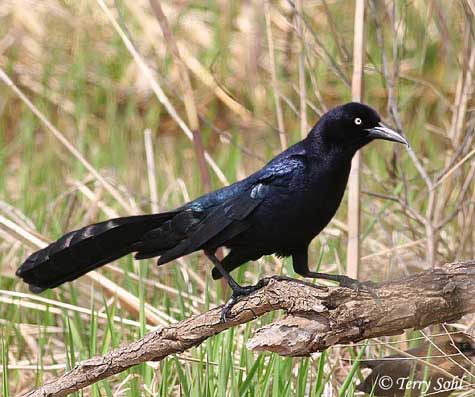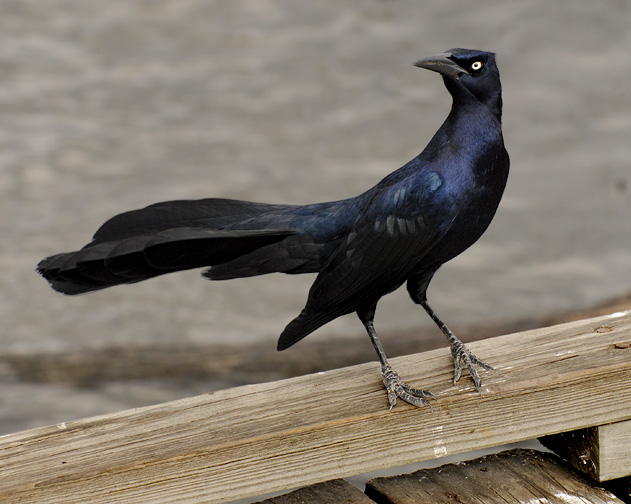
Quiscalus mexicanus
TAXONOMY
Corvus mexicanus Gmelin, 1788, Veracruz, Mexico. At least
eight geographically discrete forms recognized.
OTHER COMMON NAMES
French: Quiscale а longue queue; German: Dohlengrackel;
Spanish: Clarinero, Zanate Grande, Zanate Mayor.
PHYSICAL CHARACTERISTICS
10.5–18.5 in (26.5–47 cm); female 3.6–4.7 oz (102–132 g), male
6.2–8.9 oz (175–253 g). Sexually dimorphic in color. Males
black glossed with purple on the head, becoming blue on the
belly and back, and a yellow eye. They have a long keel-shaped
tail. Females brown, with pale brown throat and stripe above
the eye; geographically variable. Juveniles resemble females.
DISTRIBUTION
Resident in central California, central Colorado, and eastern
Iowa, south to the Gulf coast south through Mexico and Central
America to the coast of northwestern Venezuela and south
to northwestern Peru. Some individuals from northern populations
move south in winter.
HABITAT
Pastures, agricultural lands, second-growth scrub, mangrove
forests, and secondary forests to 7,500 ft (2,300 m).
BEHAVIOR
Territorial during the breeding season. Males defend a territory
with songs, “rough out” and “bill pointing” displays, and
chasing. In winter, found in flocks.
FEEDING ECOLOGY AND DIET
Forage mostly on ground or low in vegetation. Foods taken
vary seasonally, but diets consist principally of animal matter
(especially grasshoppers and other insects).
REPRODUCTIVE BIOLOGY
Successful males mate with several different females in a single
season. Females build the bulky, cup-shaped nest, which is
placed above ground, generally as high as the vegetation permits.
Generally 2–4 eggs are laid in January–July. Nesting
commences earlier and clutch sizes are smaller in the south
than in the north. Incubation takes 13–14 days; fledging about
16–19 days. Two broods may be produced in a single season.
CONSERVATION STATUS
Not threatened. Widespread and common, and its range is
rapidly expanding northward in the Great Plains.
SIGNIFICANCE TO HUMANS
They may be considered agricultural pests in some areas; however,
they eat many insects that could cause crop damage.
Other popular Animals
Photo Gallery of - Great-tailed grackle




 Animalia Life
Animalia Life